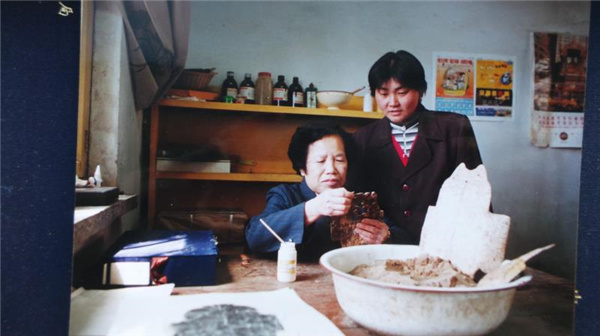How to process a freshly excavated relic? Therein lies the rub
By Ye Zizhen | China Daily | Updated: 2021-03-29 07:30

For as long as she can remember, antiques and relics have been as much a part of He Haihui's life as breakfast, lunch and dinner.
During childhood, she played in the soil around archaeologists, while her father worked as a chef at the local archaeology institute.
"I used to help them by digging up the ground, but at the time, for me, it was nothing more than just having fun," says 47-year-old He, a native of Xiaotun village of Anyang, Henan province.
Eventually she would go on to enter the field professionally, and is now a technician at the Archaeological Research Institute of Anyang, a position she took up after finishing high school at the age of 16 in 1989.
Technicians there are responsible for cleaning unearthed pottery, bronzeware and other excavated relics. She became a specialist in rubbing and making paper replicas of treasures found locally.
"Some technicians can't replicate relics clearly and accurately, in terms of lines and inscriptions, but He's very good at it," says Liu Yiman, an archaeologist with the Chinese Academy of Social Sciences, who has worked closely with He.
He's job is known as tapian, which literally means "rubbing".
As well as pottery and bronzeware, other relics that need her treatment are jade artifacts and oracle bones.
The tools and materials that a tapian needs include Chinese art paper, distilled water for sprinkling, an inkstone and rub bag, which is usually filled with cotton.
"Rubbing pottery is more difficult than rubbing an oracle bone, not only because of the shape, but also because pottery is a harder material than bones," she explains."It's difficult to replicate the exact lines and patterns on it."
A good paper replica needs to show the aesthetic features of an antique accurately, as well as any inscriptions it may carry.
"You can easily tell a good replica from a bad one," she says, "because the bad ones have little black dots on them."
A lot of arm movement is needed to make a replica, and typically, at the end of a day, she says, her arms will be aching.
It takes up to four hours to rub a relatively large bone, and it requires patience and a lot of technical skill.
"We only rub oracle bones with inscriptions on them," He says, recalling the first time she worked with Liu in 1991.
"I used to know very little about oracle bones, but of course after over 30 years of working with archaeologists like Liu, I've learned a lot, and that includes more than 200 oracle bone inscriptions. Every piece of the bone is interesting. They all tell different stories."
Her professional skills are so widely recognized that she has received many invitations from museums and institutions to rub oracle bones, including in Beijing, Dalian, Taipei and Tianjin.
Technicians in many archaeology research institutes do other jobs, such as reassembling pieces of pottery, drawing three-dimensional pictures of antiques and categorizing newly excavated relics.
"Replicas are very important, because if they're not made, only archaeologists on a site can see what the original item looked like,"He says."The replicas make it possible for a lot more people to become acquainted with these very old objects."
























